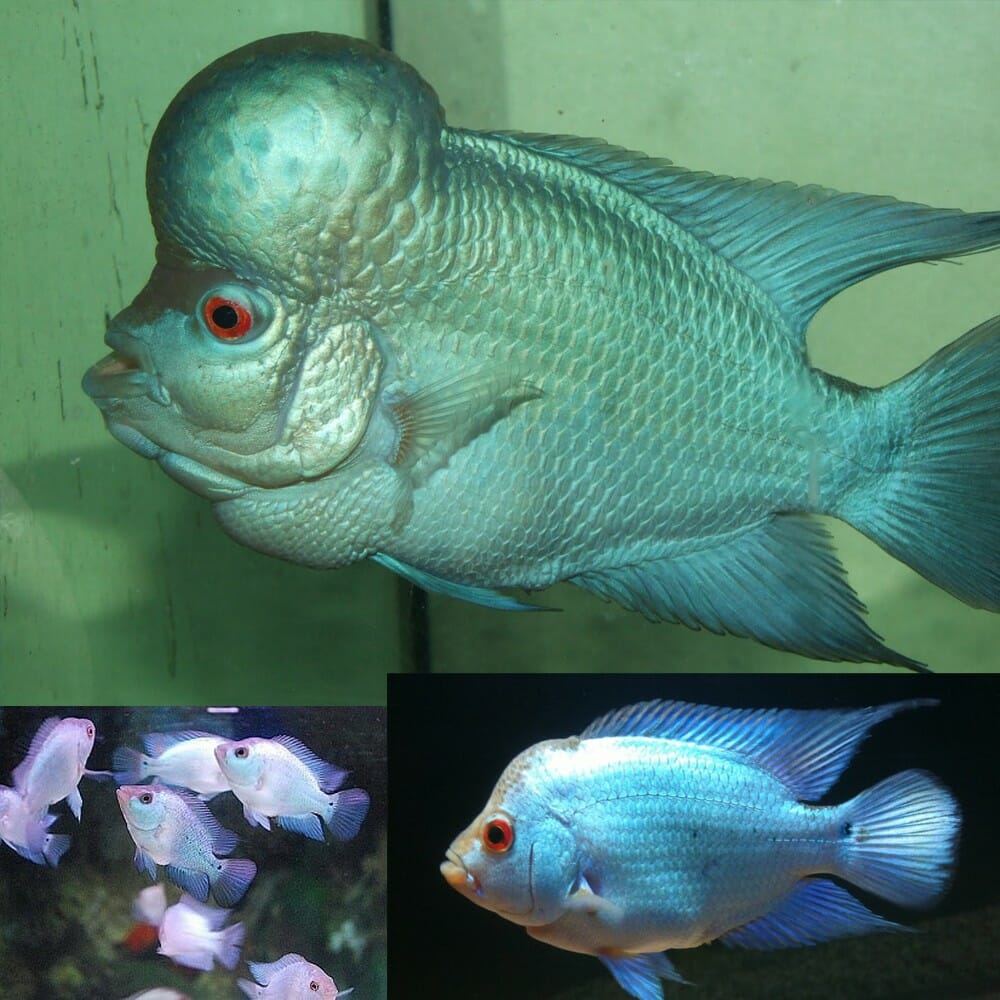Blue Flowerhorn
Aquarium enthusiasts all over the world have been captivated by the beauty of blue flowerhorn. Their stunning electric blue coloration combined with their impressive size and unique personalities make them a highly sought-after addition to any aquarium. But what makes them so special? Let's dive into the world of blue flowerhorn and explore their unique characteristics.
Pain Points
Many aquarium enthusiasts struggle with finding the right fish to add to their tanks. With so many different species to choose from, it can be overwhelming to know which one is right for you. Additionally, some people may be hesitant to add a larger, more aggressive fish to their tank, fearing that it may disrupt the peace among other fish. However, blue flowerhorn can coexist peacefully with other fish as long as they have enough space and proper care.
Target of Blue Flowerhorn
Blue flowerhorn are a hybrid fish that were created in Malaysia in the 1990s. They are a cross between various South American cichlids and have since become a highly desired species in the aquarium trade. One of the primary characteristics that sets them apart from other fish is their electric blue coloration.
Summary of Main Points
Blue flowerhorn are a unique and highly sought-after species in the aquarium trade. Despite their size and potential aggressiveness, they can coexist peacefully with other fish when given enough space and proper care. They were created in Malaysia in the 1990s and are a hybrid of various South American cichlids, with their electric blue coloration being their most distinctive feature.
Blue Flowerhorn and Their Personality
Personal experience:

I purchased my first blue flowerhorn about a year ago, and I have been enamored with their unique personalities ever since. They possess a curious and playful nature, often interacting with their owners and exhibiting behavior that is not often seen in other fish. In addition, they have unique physical features, such as a protruding forehead and intricate patterns on their fins, that make them fascinating to watch.
Blue flowerhorn are also known for their intelligence. They have been known to recognize their owners and even respond to their names. They are a very interactive fish and can be trained to perform a variety of tasks, such as eating out of your hand or following a target stick.
Blue Flowerhorn and Their Care
Personal experience:

While blue flowerhorn are relatively easy to care for, they do require specific conditions to thrive. They need a larger tank with plenty of hiding places and a substrate that will not harm their delicate skin. They prefer warmer water temperatures, around 80 degrees Fahrenheit, and thrive in slightly acidic water.
Additionally, blue flowerhorn are carnivorous and require a diet high in protein. A high-quality pellet food supplemented with live or frozen foods such as brine shrimp or bloodworms will keep them healthy and vibrant.
Blue Flowerhorn and Their Breeding
Blue flowerhorn are known for their dramatic breeding behavior. During the breeding season, males will exhibit brighter colors and become territorial. They will often spend a large amount of time preparing a nesting site and will fiercely protect their offspring once they are born.
However, breeding blue flowerhorn can be a challenge. It is important to ensure that you have a male and female pair, and that they are old enough to be sexually mature. Additionally, the water conditions must be carefully monitored and maintained in order to promote breeding behavior.
Blue Flowerhorn and Their Health
Like all fish, blue flowerhorn are susceptible to a variety of health issues. Common problems include fungal infections, bacterial infections, and parasitic infestations. It is important to perform regular water changes and monitor their behavior and physical appearance for any signs of illness.
Question and Answer
Q: Are blue flowerhorn compatible with other fish? A: Blue flowerhorn can coexist peacefully with other fish as long as they have enough space and proper care.
Q: How large do blue flowerhorn get? A: Blue flowerhorn can grow up to 16 inches in length.
Q: How often should I feed my blue flowerhorn? A: Blue flowerhorn should be fed twice a day with a high-quality pellet food supplemented with live or frozen foods.
Q: Do blue flowerhorn require any special tank decorations? A: Blue flowerhorn prefer larger tanks with plenty of hiding places and a substrate that will not harm their delicate skin.
Conclusion of Blue Flowerhorn
If you're looking for a unique and fascinating addition to your aquarium, look no further than blue flowerhorn. With their electric blue coloration, curious personalities, and impressive size, they are a truly unique species that will be sure to impress any aquarium enthusiast.
Gallery
King Kamfa Pearl Blue Godzilla (Flowerhorn Club) - YouTube

Photo Credit by: bing.com / blue dragon flowerhorn kamfa pearl king
Flowerhorn Kaufen - Blue Diamond Flowerhorn Steht Zum Verkauf
Photo Credit by: bing.com / flowerhorn hump qualitã spitzen
My Blue Diamond Flowerhorn Kip | Flickr - Photo Sharing!
Photo Credit by: bing.com / flowerhorn blue diamond fish kip he flickr imgur
Thai Silk Blue Flowerhorn 10-12cm - Aquarium Central

Photo Credit by: bing.com /
Update To My Electric Blue Flowerhorn!! - YouTube

Photo Credit by: bing.com / flowerhorn blue electric